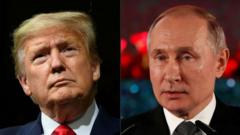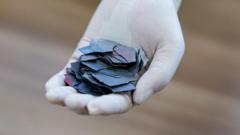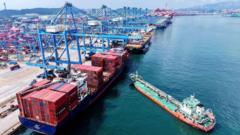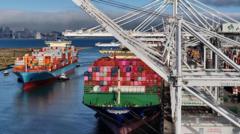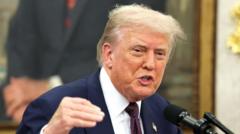Nike’s profitability and pricing strategy could be significantly affected by U.S. tariffs on imported goods, particularly from Asian manufacturing hubs. Analysts predict potential price increases, but the competitive market may limit how much Nike can pass on to consumers.
The Impact of Tariffs on Nike's Iconic Trainer Prices
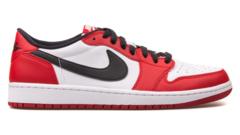
The Impact of Tariffs on Nike's Iconic Trainer Prices
How proposed tariffs may reshape the pricing landscape for Nike trainers, amid rising costs and industry competitive pressures.
Nike's legendary Air Jordan 1, closely associated with basketball icon Michael Jordan, symbolizes the brand's deep-rooted American heritage. However, while Nike generates substantial sales in the U.S., the manufacturing occurs predominantly in Asia, regions now facing hefty tariffs imposed by President Trump's administration, targeting imports from countries deemed economically hostile.
Following the announcement of these tariffs, Nike's stock experienced a notable drop of 14%, raising concerns about the possible disruption of its supply chain. The pivotal question revolves around how much of the increased costs will be transferred to customers, should the tariffs stay in place.
In July, the tariff tariffs on goods imported from countries like Vietnam, Indonesia, and China could reach between 32% to 54%. Despite negotiations for potential relief, analysts believe significant price hikes are unavoidable. UBS, for instance, projects a possible 10% to 12% rise in prices for items sourced from Vietnam, where a large portion of Nike's production occurs.
Industry experts argue that while the company has historically leveraged its brand strength to maintain pricing power, the highly competitive athletic footwear sector presents challenges. Morningstar analyst David Swartz suggests that substantial increases beyond 15% could risk reducing demand, further complicating Nike's pricing strategy.
Nike is not alone in this predicament; various global brands like H&M, Adidas, and Lululemon face similar pricing pressures. For Nike, the financial strain is evident; despite $51 billion in sales recently, it maintains a gross profit margin of over 40%, which diminishes after operational expenses are factored in, leaving a profit margin near 11%.
Analysts like Rahul Cee propose alternate strategies to mitigate costs without raising retail prices significantly. Suggestions include simplifying shoe technology or extending the design refresh cycle, both of which could help maintain a lower retail price point.
Simeon Siegel from BMO Capital Markets noted that the current discourse around tariffs remains fluid, with many companies still assessing the implications. Nike's ability to pass on costs effectively is uncertain, especially given existing sales challenges and consumer sentiment within the key North American market.
As the financial and competitive landscape shifts, the pressure will mount on brands like Nike to either absorb the cost of tariffs or adjust their pricing strategies accordingly. Nike's reliance on the U.S. market, which contributes to $21.5 billion of its revenue, underscores the stakes involved as these developments unfold. If the tariff conflict persists, analysts predict that consumers may inevitably feel the pinch of increased prices.


